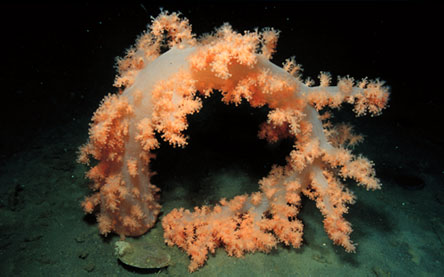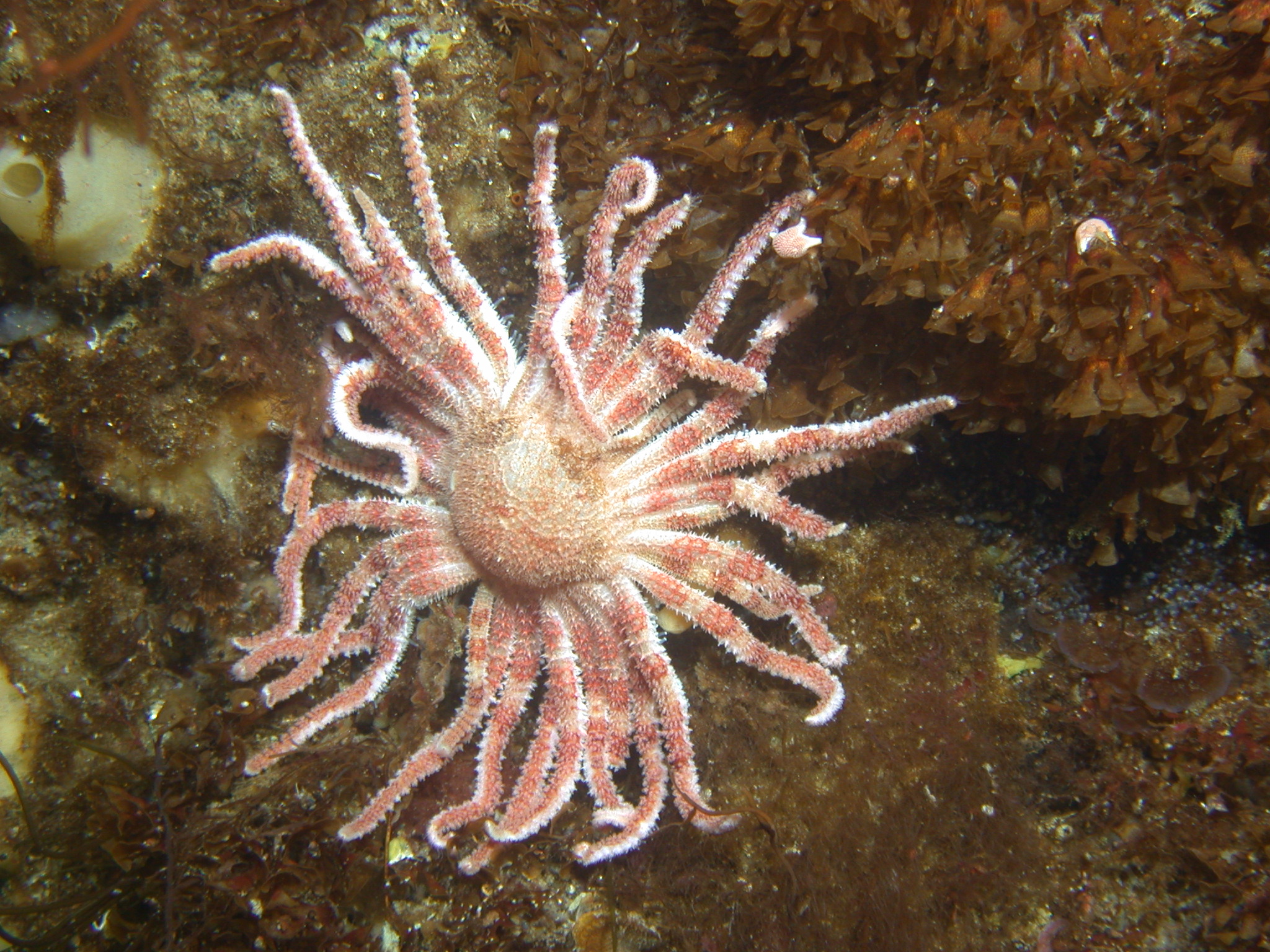
My former doctoral student, Marc Slattery, now a Professor at Ole Miss, could not believe his eyes. The giant tree-like soft coral, Gersemia antarctica, seen on the time-lapse video he had just recovered, had laid its trunk down against the substrate and rolled its polyp-laden branches in a complete circle! As thousands of tiny feeding polyps (tentacled projections) encountered the nutrient-rich muck, they engulfed organic particles, small plant-like diatoms, and tiny invertebrates. Like sheep grazing in a field, once the foraging circle was completed it was time to move on to greener pastures. The soft coral stood back up and moved across the seafloor by contracting the bulbous root-like base of its trunk. When it had moved to a new region of the seafloor, it laid itself back down, and commenced feeding again.
Soft corals don't do this. Nowhere on the planet had anyone ever before witnessed a soft coral lie down, roll around on the seafloor, then stand back up and crawl off to another foraging site. This would be akin to gazing out your window one morning into your front yard and watching your oak tree move across the street to a sunnier location in your neighbors' yard. You gotta be kidding!
So what is it about Antarctica that might have nudged the evolution of such a novel mode of feeding? Normally soft corals stand firm, providing themselves with nutrition by catching plankton or suspended organic particles floating in the water. The answer I believe lies in what has puzzled Antarctic marine ecologists for decades. There is not much plankton to catch and eat. Near McMurdo Station on the Ross Sea, where Marc made this remarkable discovery, the water is so clear of plankton most of the year that you literally can see five-hundred feet. Indeed, with the notable exception of a short soup-like summer plankton bloom (an explosion of tiny plants and animals in the water), there is not much in the way of plankton. I suspect that this giant soft coral figured out a way to raid the refrigerator, supplementing its normal mode of feeding to make up the difference.
The first time I got a close view of the huge (up to two-and-a-half feet wide) multi-armed Antarctic sea star Labidiaster annulatus I could not believe my eyes. It was stunning. Its golden serpent-like arms, over twenty in number, wiggled, some lifting themselves up in to the water, others secured tightly against the bottom of the aquarium with tiny tube-feet. The sea star looked similar to the much-feared predatory Pycnopodia helianthoides, a species I had come to know well in the subtidal coastal communities of my home state of California.

When Pycnopodia calls everyone listens (actually smells). I have seen snails, abalone, and sea urchins flee from this roving beast. Some to escape twirl their shells violently back and forth as they run. If caught up in the arms and tube feet of this "lion of the Serengeti" they are quickly slain.
After reading about and watching Labidiaster closely in the laboratory it is clearly not a lion of the seafloor. While it may prowl about a bit now and again, rather, it seems quite content to sit still. Nonetheless, its display of several unique feeding behaviors may make it just as effective a predator as a lion. One unusual habit is for this large sea star to lay flat but lift a number of its many arms - tube-feet extended - up into the water column. It's fishing! Not for fish per se (but see below), but more likely small crustaceans that are snagged by the tube feet and carried to the mouth. There are even documented observations of krill –the abundant shrimp-like animals that are the focal point of Antarctic food webs - being captured using this novel foraging technique.
Another unique feeding habit must have thrilled scientists when first observed. Labidiaster raises it central disc up, forming an inviting cave under its body. Marine invertebrates and fish love caves. Attracted to this seeming refuge they crawl right in, ironically, to meet a gustatory fate as the sea star collapses upon them. That a sea star can catch a fish is novel indeed. That one has learned to catch krill and fish to supplement its diet of clams, snails, and sea urchins, is remarkable. Once again, Antarctica surprises.